
LIMNOLOGY
Scope & Guideline
Advancing Aquatic Science for a Sustainable Future
Introduction
Aims and Scopes
- Freshwater Ecosystem Dynamics:
Research focused on understanding the interactions and processes within freshwater ecosystems, including biotic and abiotic factors that influence community structure and function. - Biodiversity and Conservation:
Studies that explore the diversity of aquatic organisms and their habitats, including assessments of invasive species, conservation strategies, and the impacts of human activities on freshwater biodiversity. - Water Quality and Pollution:
Investigations into the chemical and biological indicators of water quality, the effects of pollutants, and the mechanisms of nutrient cycling in freshwater bodies. - Climate Change Impacts:
Research examining how changing climatic conditions affect freshwater ecosystems, including temperature variations, hydrological changes, and species responses. - Technological Advances in Monitoring:
The development and application of innovative techniques such as environmental DNA (eDNA) methods for monitoring aquatic biodiversity and assessing ecosystem health.
Trending and Emerging
- Environmental DNA (eDNA) Applications:
The increasing use of eDNA methodologies highlights a trend towards non-invasive monitoring techniques for biodiversity assessment, allowing researchers to gather data on species presence and distribution more efficiently. - Impacts of Climate Change on Freshwater Systems:
Research focusing on how climate change influences temperature, hydrology, and species distributions in freshwater environments is becoming increasingly relevant as global climates shift. - Invasive Species Research:
There is a growing emphasis on understanding the impacts of invasive species on native ecosystems, including their ecological effects and management strategies. - Functional Ecology and Ecosystem Services:
Studies examining the functional roles of various species within freshwater ecosystems and their contributions to ecosystem services are gaining importance, reflecting a shift towards applied ecological research. - Integrated Watershed Management:
Research that investigates the interplay between land use, water quality, and ecosystem health at the watershed scale is becoming more prominent, indicating an integrated approach to freshwater management.
Declining or Waning
- Traditional Taxonomic Studies:
Research centered on the detailed taxonomy of specific taxa has seen a decline, potentially overshadowed by broader ecological and conservation-related studies. - Static Habitat Studies:
Research focusing solely on static assessments of freshwater habitats without considering dynamic environmental factors is becoming less prevalent, as there is a greater emphasis on understanding ecosystem interactions and changes over time. - Historical Limnology:
Studies that primarily focus on historical data without linking to current environmental changes and management practices are less frequently published, indicating a shift towards more applied and contemporary research.
Similar Journals
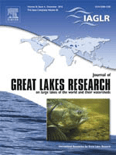
JOURNAL OF GREAT LAKES RESEARCH
Exploring the Depths of Aquatic ScienceJOURNAL OF GREAT LAKES RESEARCH is a prestigious academic journal published by Elsevier Science Ltd, focused on the vital field of aquatic sciences and ecology. With a long-standing history since its inception in 1975, this journal proudly ranks in the Q1 quartile across multiple categories, including Aquatic Science and Ecology, as of 2023, reflecting its significant contribution to the scientific community. The journal's impact is underscored by its impressive Scopus rankings, placing it within the top percentile of scholarly publications in related disciplines. Although it operates under a subscription model, its influence extends globally, serving as a critical resource for researchers and professionals dedicated to understanding the Great Lakes ecosystem and its broader ecological implications. As it converges into its future publications through 2024, JOURNAL OF GREAT LAKES RESEARCH remains an essential platform for innovative research that shapes environmental policy and promotes sustainable practices in aquatic environments.
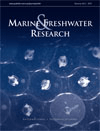
MARINE AND FRESHWATER RESEARCH
Connecting research with real-world impact.Marine and Freshwater Research is a prestigious journal published by CSIRO PUBLISHING that serves as a key platform for the dissemination of cutting-edge research in the fields of Aquatic Science, Ecology, and Oceanography. With an impactful presence since its inception in 1948, the journal provides critical insights into the dynamics of freshwater and marine ecosystems, promoting interdisciplinary approaches that contribute to our understanding of biodiversity and sustainability. Currently ranked in the Q2 category across major scientific domains, including Ecology and Aquatic Science, it enjoys a robust academic reputation supported by impressive Scopus rankings, such as Rank #66/247 in Aquatic Science and Rank #44/145 in Oceanography, reflecting its high citation impact and relevance. While offering a subscription-based access model, the journal remains dedicated to fostering dialogue and innovation within the scientific community, aiming to bridge the gap between research findings and practical applications in environmental management. Located in Australia, Marine and Freshwater Research is an essential resource for researchers, professionals, and students dedicated to exploring the complexities of aquatic ecosystems and advocating for their preservation.

ECOHYDROLOGY & HYDROBIOLOGY
Pioneering insights into hydrological and biological interactions.ECOHYDROLOGY & HYDROBIOLOGY, published by the European Regional Centre Ecohydrology Polish Academy of Sciences, is a leading journal in the field of Aquatic Sciences, recognized for its impactful contributions with a 2023 Scopus ranking placing it in the top 20% of its category. Established in 2001 and converging scholarly insight until 2024, this journal aims to advance knowledge on the interactions between hydrological cycles and biological communities, providing a platform for innovative research that addresses critical environmental challenges. With a Q1 quartile classification, it is an essential resource for researchers, professionals, and students dedicated to exploring sustainable aquatic ecosystems. Although it follows a traditional subscription model, the journal maintains a commitment to disseminating high-quality research that informs policy and practice in the field. Located in Portugal and operating out of Lodz, the journal invites a diverse global readership to engage with its comprehensive range of articles and studies.
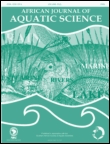
AFRICAN JOURNAL OF AQUATIC SCIENCE
Navigating the complexities of aquatic ecosystems together.AFRICAN JOURNAL OF AQUATIC SCIENCE, published by TAYLOR & FRANCIS LTD, is a premier scholarly journal dedicated to the field of aquatic science, ecology, and environmental management, playing a crucial role in advancing research and knowledge in these vital areas. With an impressive Q2 ranking in both Aquatic Science and Ecology, Evolution, Behavior and Systematics, the journal seeks to publish high-quality research encompassing a wide range of topics related to freshwater and marine ecosystems, including biodiversity, conservation strategies, and the impacts of climate change. Featuring a rich history of publication from 2000 to 2024, the journal not only embraces rigorous peer review but also aims to foster collaboration and dialogue among researchers, practitioners, and students interested in aquatic environments. Readers will find that the journal’s commitment to impactful scientific communication is reflected in its notable rankings within the Scopus database, making it an essential resource for those engaged in aquatic research and management.
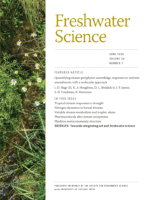
Freshwater Science
Innovating Research for Sustainable Water ManagementFreshwater Science is a pivotal journal published by the University of Chicago Press, dedicated to advancing the understanding of freshwater ecosystems and their biodiversity. With an ISSN of 2161-9549 and an E-ISSN of 2161-9565, this journal has been a vital resource in the fields of Aquatic Science and Ecology, consistently ranked in the Q2 quartile across multiple categories in 2023. The journal encapsulates rigorous research and innovative studies aimed at addressing the ecological dynamics of freshwater environments from 2012 to 2024. Researchers and practitioners benefit from its open access options, which enhance the dissemination of knowledge while contributing to a better understanding of aquatic systems. With Scopus rankings that place it in the top 30% of its fields, Freshwater Science plays an influential role in fostering scientific dialogue and collaboration among professionals, making it an essential publication for anyone invested in freshwater conservation, management, and ecological impact.

Limnology and Oceanography Letters
Illuminating the depths of freshwater and marine science.Limnology and Oceanography Letters, published by WILEY, is an esteemed peer-reviewed journal dedicated to advancing our understanding of freshwater and marine systems. With an impressive Q1 ranking in both Aquatic Science and Oceanography, this journal has established itself as a pivotal resource for researchers, professionals, and students alike. Since its inception as an Open Access journal in 2016, it has provided unrestricted access to high-quality, innovative research articles that illuminate diverse aspects of aquatic ecosystems and their dynamics. With a publication history from 2016 to 2024 and a significant presence in Scopus rankings—placing it in the top 6% for Oceanography and the top 8% for Aquatic Science, this journal not only fosters scholarly communication but also encourages interdisciplinary collaboration. Addressing pressing issues related to water resource management, climate impact, and ecological integrity, Limnology and Oceanography Letters remains essential for those dedicated to the science of aquatic environments.
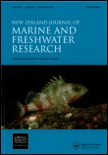
NEW ZEALAND JOURNAL OF MARINE AND FRESHWATER RESEARCH
Navigating the Future of Aquatic EcologyNEW ZEALAND JOURNAL OF MARINE AND FRESHWATER RESEARCH, published by Taylor & Francis Ltd, stands as a distinguished platform for the dissemination of innovative research in the realms of aquatic science and ecology. With an ISSN of 0028-8330 and E-ISSN 1175-8805, this journal has been curating significant scientific contributions since its inception in 1967, continuing through to 2024. Recognized in the Q2 category across multiple relevant fields—including Aquatic Science, Ecology, and Water Science—this journal ranks notably in Scopus, with a 74th percentile for Ecology, Evolution, Behavior and Systematics, highlighting its impact and relevance within the scientific community. Though not an open-access publication, its rigorous peer-reviewed articles offer insights that resonate with researchers, professionals, and students who are passionate about advancing our understanding of freshwater and marine ecosystems. By fostering a collaborative space for ecological and environmental inquiries, the NEW ZEALAND JOURNAL OF MARINE AND FRESHWATER RESEARCH is essential for those aiming to contribute to the vital conversations around biodiversity, conservation, and sustainable management of aquatic resources.
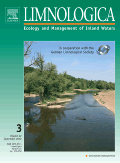
LIMNOLOGICA
Unveiling the Secrets of Freshwater BiodiversityLIMNOLOGICA is a prestigious academic journal dedicated to the field of aquatic sciences, published by Elsevier GmbH, a leading global publisher known for its commitment to disseminating high-quality research. With an ISSN of 0075-9511 and an E-ISSN of 1873-5851, the journal has established itself as a vital source of scholarly articles, reviews, and case studies since its inception in 1974. Operating from its base in Munich, Germany, LIMNOLOGICA provides a forum for researchers and professionals to explore contemporary issues in limnology, ensuring important contributions to the understanding of freshwater ecosystems. Recognized in the 2023 rankings, the journal boasts a respectable Q2 quartile in Aquatic Science, ranking #98 out of 247 in Scopus, placing it in the 60th percentile among its peers. While currently not an open-access journal, it continues to attract a wide readership by providing insights into ecological processes, conservation strategies, and the impacts of anthropogenic changes on freshwater environments. This makes LIMNOLOGICA an essential resource for anyone engaged in aquatic research, conservation efforts, and environmental policy development.
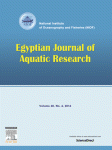
Egyptian Journal of Aquatic Research
Advancing aquatic science for a sustainable future.Welcome to the Egyptian Journal of Aquatic Research, a premier peer-reviewed academic journal published by ELSEVIER, dedicated to advancing the field of aquatic sciences. With a robust impact factor and recognition as a Q1 journal in key categories such as Aquatic Science and Ecology, this open access journal has established itself as a vital platform for disseminating high-quality research since its inception in 2012. The journal aims to provide comprehensive coverage of topics including ecology, evolutionary biology, and water science, making it a crucial resource for researchers, professionals, and students engaged in these dynamic fields. With Scopus rankings placing it in the top echelons of various categories, the Egyptian Journal of Aquatic Research fosters innovation, collaboration, and knowledge dissemination on a global scale, making it an indispensable asset for anyone invested in understanding and preserving aquatic systems.

Fundamental and Applied Limnology
Innovating in Limnology: Where Research Meets Real-World ImpactFundamental and Applied Limnology is an esteemed academic journal dedicated to the exploration of freshwater ecosystems, bridging the gap between fundamental research and practical applications. Published by E Schweizerbart'sche Verlagsbuchhandlung in Germany, this journal has been a vital resource in the fields of aquatic science and ecology since its inception in 2007. With its ISSN 1863-9135 and E-ISSN 1863-9135, it provides a platform for researchers to disseminate significant findings related to limnology, contributing to a rich understanding of freshwater biodiversity, water quality, and ecological interactions. Although currently rated in the Q3 quartile for aquatic sciences and ecology as per the 2023 rankings, it remains a valuable outlet for interdisciplinary research and practical insights, facilitating critical advancements in environmental management. Open access options enhance its visibility and accessibility, making it indispensable for researchers, professionals, and students alike who are committed to advancing the scholarship in freshwater studies. Engaging with this journal not only opens doors to the latest research findings but also fosters collaboration and innovation in the ecological community.